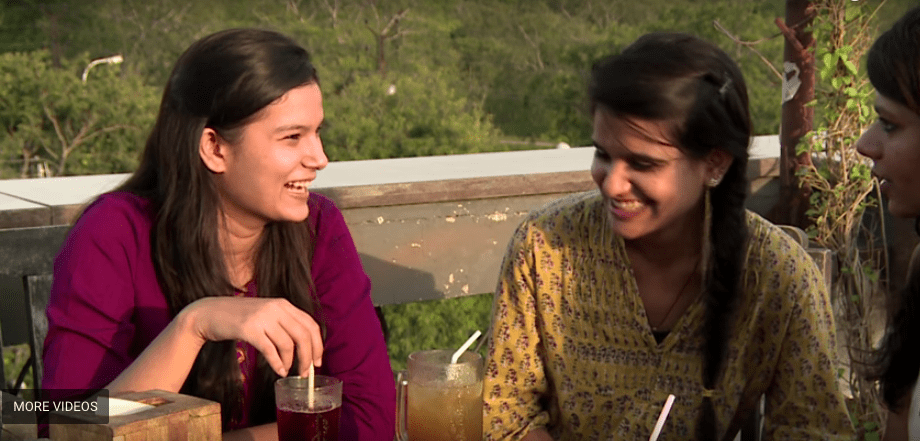Lesson plan developed for http://hindistartalk.lrc.columbia.edu/ by Rosanne Zeppieri and Rajni Bhargava; language notes by Rakesh Ranjan.
Targeted Performance Level: Intermediate High/Advanced low
Age Range of Learners: Middle school/High school
Time: 90 minutes
Objectives: Students will be able to:
- Ask for and provide a description of a tea shop.
- Ask for, follow, and give instructions for making chai.
- Compare and contrast chai made in different places.
- Interview people in the community for a business idea on chai.
- Explain and discuss ideas which will sell chai.
Language Targets:
Know the name of utensils, pots, tea pots, boiling of water and tea, arts and artifacts in the shops.
|
|
- Use of imperative form of the verb Hindi has three imperative forms which correspond to three forms of the second person personal pronoun; they are tuu (you-intimate), tum (you-familiar) and aap (you-formal).
- The intimate imperative from is the verbal stem, that is, it is formed by removing the –naa suffix from the infinitive form of the verb. (tuu) khaa – (you) eat. (tuu) paRh – (you) study/read. Such forms are often used to address small children, or among close friends.
- The Familiar Imperative is formed by adding the suffix –o to the verb stem. These forms are used among friends and peers.
- (tum) khaao – (you) eat; (tum) paRho (you) study/read
- The formal imperative corresponds to aap. It is formed by appending the suffix- iye to the verb stem. These forms are used to address elders or superiors as they confer respect.
- (aap) khaaye – Please eat. (aap) paRhiye – Please study/read
- Note: The formal imperative forms of verbs lenaa (to take), denaa (to give), karnaa (to do) and piinaa are somewhat irregular. They are liijiye, diijiye, kiijiye and piijiye respectively.
- Use of kya pasand hai, kaisi pasand hai.
- Use of superlatives, different colloquial phrases, jhakaas, fanDu, mast when describing chaai.
- Use of conditional clauses, for e.g., agar aise karenge to chai zyaadaa bikegii.
Performance Assessment:
Business students are assigned a project for the upcoming summer festival at their university. They will design and set up a tea stall. The group with the most innovative idea will win and will have the opportunity to participate in the festival.
Students come up with an original plan to build a Tapri. Further, they design a plan for selling the chai. Each plan includes five selling points.
Materials:
- http://chaiwallahsofindia.com/blog/
- http://khabar.ndtv.com/news/blogs/ravish-kumar-chai-par-charcha-720573
- http://hindistartalk.lrc.columbia.edu/unit/food-and-restaurants/ (Hindi Module)
- http://hindistartalk.lrc.columbia.edu/lesson/making-of-tapri/ (Making Of Tapri)
- http://hindistartalk.lrc.columbia.edu/lesson/tapri-tea-shop/ (Tapri Tea Shop)
Learning Scenarios:
Opening Activity: Students listen to an interview. (Just as millions in the Maximum City were drinking their first cup of the day or sitting stuck in rush hour traffic, we chatted with hosts and Salil Acharya and Archana Pania about Bollywood and where to get the best cup of chai in Mumbai.) http://chaiwallahsofindia.com/blog/ As they listen, students note the host’s preference for tea and shops in Mumbai where the best chai is served.
Activity 2: Students read an article about the ways chai is made in different shops. http://khabar.ndtv.com/news/blogs/ravish-kumar-chai-par-charcha-720573
Students scan for different words related to making of chai, like caai kii patii, ubaalnaa, khaulaanaa, khadaknaa, khulii cai kii pattii, channii, ketalii, kaDak cai, etc., and teacher writes it on a butcher piece of paper for students to use it later on as a reference sheet.
Students form groups of four to read the article focusing on the way chai is made in Calcutta and how it is different from the the method used in Delhi. The teacher might supply a note taking organizer to facilitate this work.
Students share information they gathered from the article within their groups. They meet with another group to talk about their findings and to clear up any misconceptions.
Students then share their own experiences about the way chai is made in their own family. Students within their groups come to consensus on one favorable way to make chai.
Activity 3: Students conduct a survey via Skype with native speakers in the community. They gather information about about the brand of tea they prefer and why, their preference for how they prepare chai, the possibility of opening a chai shop in the community and the type of place it would be – somewhere to read a book with a cup of chai, somewhere to hang out with friends or family, somewhere to listen to nice music, to have snacks to go with chai, to offer a variety of chai’s or in other words taste of all Indian chaai in one place. Students will discuss their findings and will record their findings on a graphic organizer that they will use as a first step to plan a business venture.
Activity 4: Students in groups watch the video on a shop called “Tapri” in Ajmer and note down the unique features of that shop, it can be the products to go with chai, the place to hangout and write stories about the chai place, things to eat with chai. What was appealing to them and why would they like to include it in their shop. Students after listening to others can revisit the Tapri shop again and change their preference if they want to.
Activity 5: Business students are assigned a project for the upcoming summer festival in the University to set up a tea stall. A group with the most innovative idea will win and get to set up a stall in the festival.
Students will come up with their own plan to build a Tapri with their own unique style of selling chai. They have to include five selling points which will sell the chai in their tea stall.
